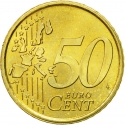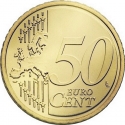You are about to finish your registration. Please check your mailbox (including spam folder). There should be a letter with a confirmation link. Check setting to make sure that your e-mail address is correct.
Send letter againDescription
On 7 June 2005, the European Council decided that the common side of the €0.10 to €2 coins should be brought up to date to reflect the enlargement of the EU in 2004. The €0.01, €0.02 and €0.05 coins show Europe in relation to the rest of the world, therefore they remained unchanged. In 2007, the new design was introduced. The design still retains all elements of the original designs but the map of the fifteen states is replaced by one showing the whole of Europe as a continent, without borders, to stress unity.
Obverse

|
Depicts the Three Towers of San Marino: Guaita, Cesta and Montale, surrounded by the twelve stars of Europe. In a semicircle over the towers the date, country name and the initials of the designer (stylised Ch), the mint mark (R) below the country name. The initials of the engraver between stars below. 2008 SAN MARINO |
|---|---|
Reverse

|
A geographical map of Western Europe spans the outer ring and inner core on the left side of the coin. 50 |
| Edge |
50 Euro Cent
2nd map
KM# 484 Schön# 484
Swap now (3 offers)
Characteristics
| Material | Nordic Gold |
| Weight | 7.8 g |
| Diameter | 24.25 mm |
| Thickness | 2.38 mm |
| Shape |
|
| Alignment | Medal |
| Mint |
Italian State Mint and Polygraphic Institute (IPZS)
|





